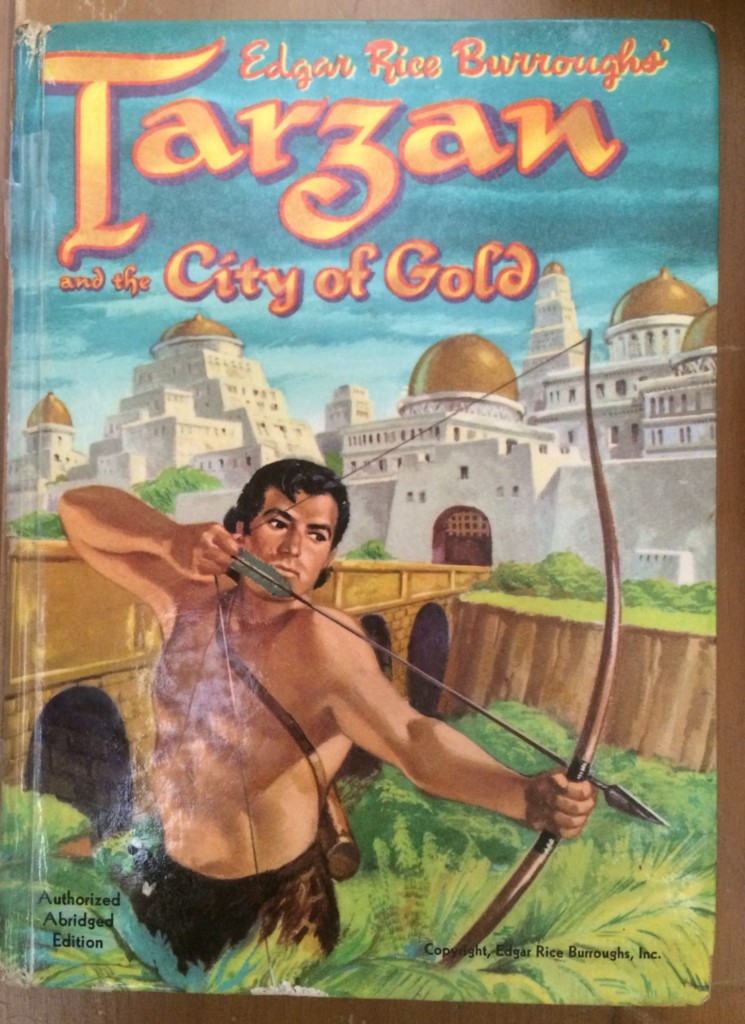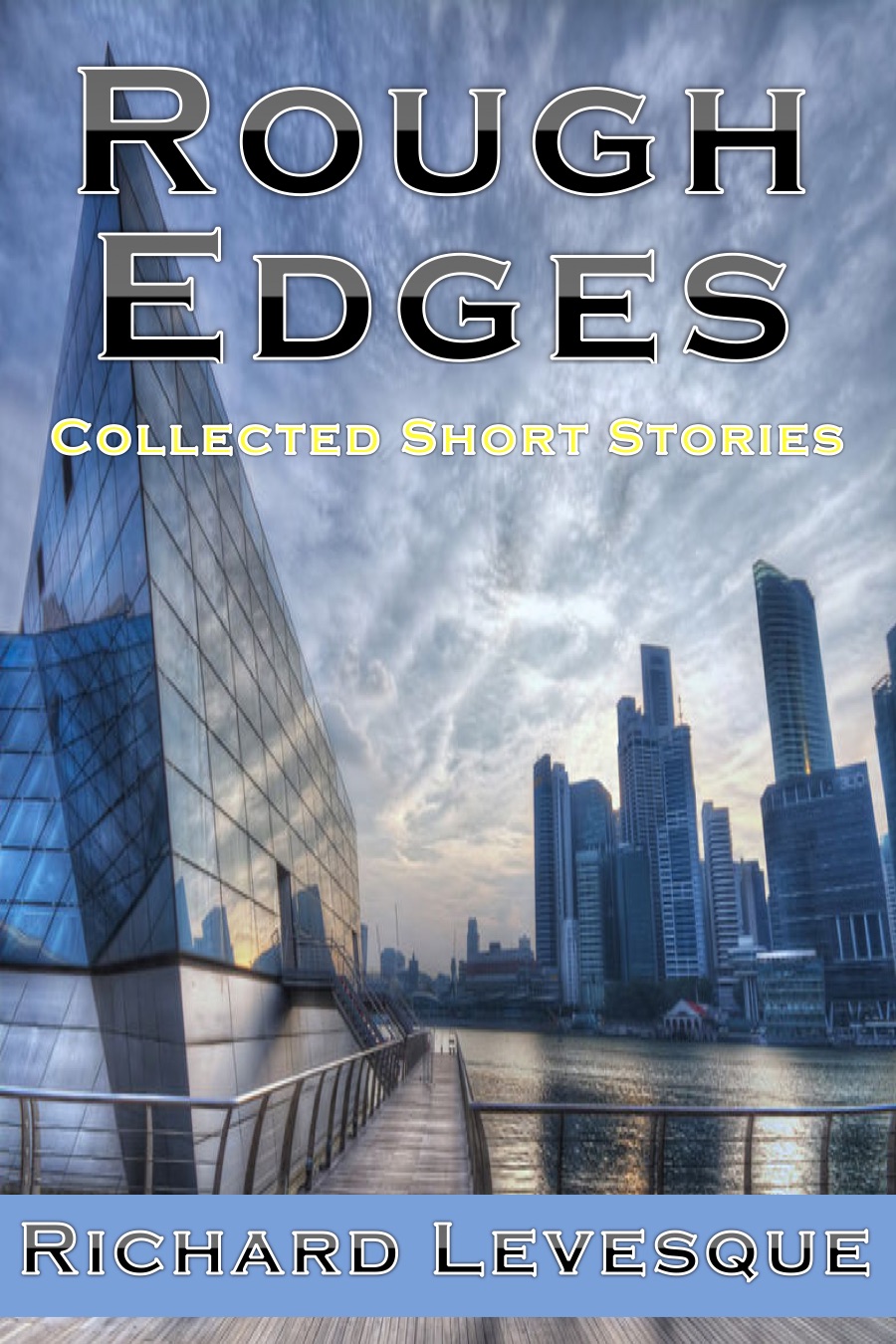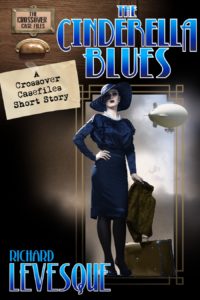Tarzan and the City of Gold: My Gateway Book
 I must have been about eight years old. Our neighbor, a grandmotherly type whose children had all grown up, was cleaning out her garage and brought over a box of books, mostly Whitman Classics hardcovers. I could have them if I wanted them, she told me. I wasn’t a big reader at eight, but it seemed like a pretty good deal to me, so I accepted them and made a spot for them on the shelves in my room. I remember there were some Brains Benton mysteries, The Call of the Wild, The Mark of Zorro, and three Tarzan adventures, maybe a dozen books in all. I’d like to say I read them all right away, became an avid reader, and moved on to the classics by the time I was ten.
I must have been about eight years old. Our neighbor, a grandmotherly type whose children had all grown up, was cleaning out her garage and brought over a box of books, mostly Whitman Classics hardcovers. I could have them if I wanted them, she told me. I wasn’t a big reader at eight, but it seemed like a pretty good deal to me, so I accepted them and made a spot for them on the shelves in my room. I remember there were some Brains Benton mysteries, The Call of the Wild, The Mark of Zorro, and three Tarzan adventures, maybe a dozen books in all. I’d like to say I read them all right away, became an avid reader, and moved on to the classics by the time I was ten.
It didn’t quite work out that way.
The books sat on the shelf for a couple of years. I’m pretty sure I traded one of the Tarzan books for a rubber snake, and the lone Trixie Belden book was definitely given away.
But eventually, the realities of being almost nine years older than my only sister and living on a street where there were no other kids my age set in, and sometime during the summer between fourth and fifth grade, I cracked open Tarzan and the City of Gold. My life was never the same.
That summer has taken on an almost mythic qualities for me. I remember spending hours reading in the living room beside an open window, the shade from the enormous ash tree in our front yard keeping the room cool, sounds of birds and the scent of green lawn coming in on the breeze. I burned through the two Tarzan books that remained to me, regretting the trade I’d made for the rubber snake I no longer cared about. I read The Mark of Zorro and a few others and was hungry for more. The floodgates had opened; I was a reader. I could think of no better way to pass those summer days.
In the year or two that followed, I discovered the Vine Street library, an easy bike ride from home. I mostly stuck to the racks of paperbacks and usually chose books based on their covers. My interest in Edgar Rice Burroughs adventures helped me gravitate to science fiction and fantasy, but most of the library books I read were pretty forgettable; the only ones I distinctly remember reading were The Hobbit and the few paperbacks with sex scenes that the librarians must not have known were in the kids’ section.
At about the same time, I’d started mowing neighbors’ lawns for spending money–not the kind of thing pre-teen boys seem to do anymore. I pretty much saw that money as potential books, and I’d go shopping with my parents every chance I got, hanging out in the book department at Gemco while they got the groceries. The exit was right next to the books, so when my mom or dad came by with a cart full of food, all bagged and paid for, I’d make up my mind from among the best prospects that week and make my purchase. I remember buying a lot of the Signet James Bond books there.
Not long after, probably by the time I was a freshman in high school, I discovered The Compleat Paperbacker, a store that was gloriously crowded and wonderfully disorganized but where there was a massive collection of science fiction, mostly at half-cover price. A lot of those books were old, with 75 cent cover prices, so I could get three or four books for less than two dollars if I chose correctly. That was when things really took off. I’d soon read dozens of Edgar Rice Burroughs’ books: the Mars series, the earth’s core series, the land that time forgot series. I also discovered Ray Bradbury and Doc Savage books, more than I could count. And I read and read and read.
Somewhere along the way, by the time I was in college, I’d lost the thread of science fiction and adventure books, having graduated to serious literature. I remember Mr. Heninger, my junior English teacher in high school, scoffing when he’d found me reading Burroughs’ The Rider, no doubt feeling I was wasting my time on anything that wasn’t Hemingway or better. By the time I was in college, enough of those teachers and professors had pushed me in that direction. But then one day in grad school, having jumped into a sort of theory boot camp during a summer program at Cornell, I walked into a used bookstore in downtown Ithaca, pretty much brain dead from cramming heavy duty philosophy and literary theory into my head, and there was Philip K. Dick’s Eye in the Sky, a cheap 60 cent Ace paperback from the mid-60s. I was back in the Paperbacker. I was 15 again. I was back on that couch in my parents’ living room with the window open and the smells and sounds of summer coming in. I was saved.
I read more “serious” literature after that, and still enjoy it, but I read a lot more SF and pulpy stuff, too. It was like I’d found my way back to where I belonged. And I also realized that the teachers who’d pushed me away from that kind of reading weren’t exactly right in their scoffing. There is a lot of pulpy, kid-oriented stuff that is junk, but there’s also a lot with real value to it. I can enjoy both, and still do. Somewhere along the way, I even started writing my own.
I think back to that box of books I received when I was 8. I wish I still had them all, but I do still have my copy of Tarzan and the City of Gold. I’m sure it would fall apart if I tried to read it, the mark of a good book if ever there was one.
So, what was your gateway book?
books Brains Benton Doc Savage Edgar Rice Burroughs Eye in the Sky Philip K. Dick Ray Bradbury Reading Tarzan Tarzan and the City of Gold The Call of the Wild The Hobbit The Mark of Zorro Trixie Belden






